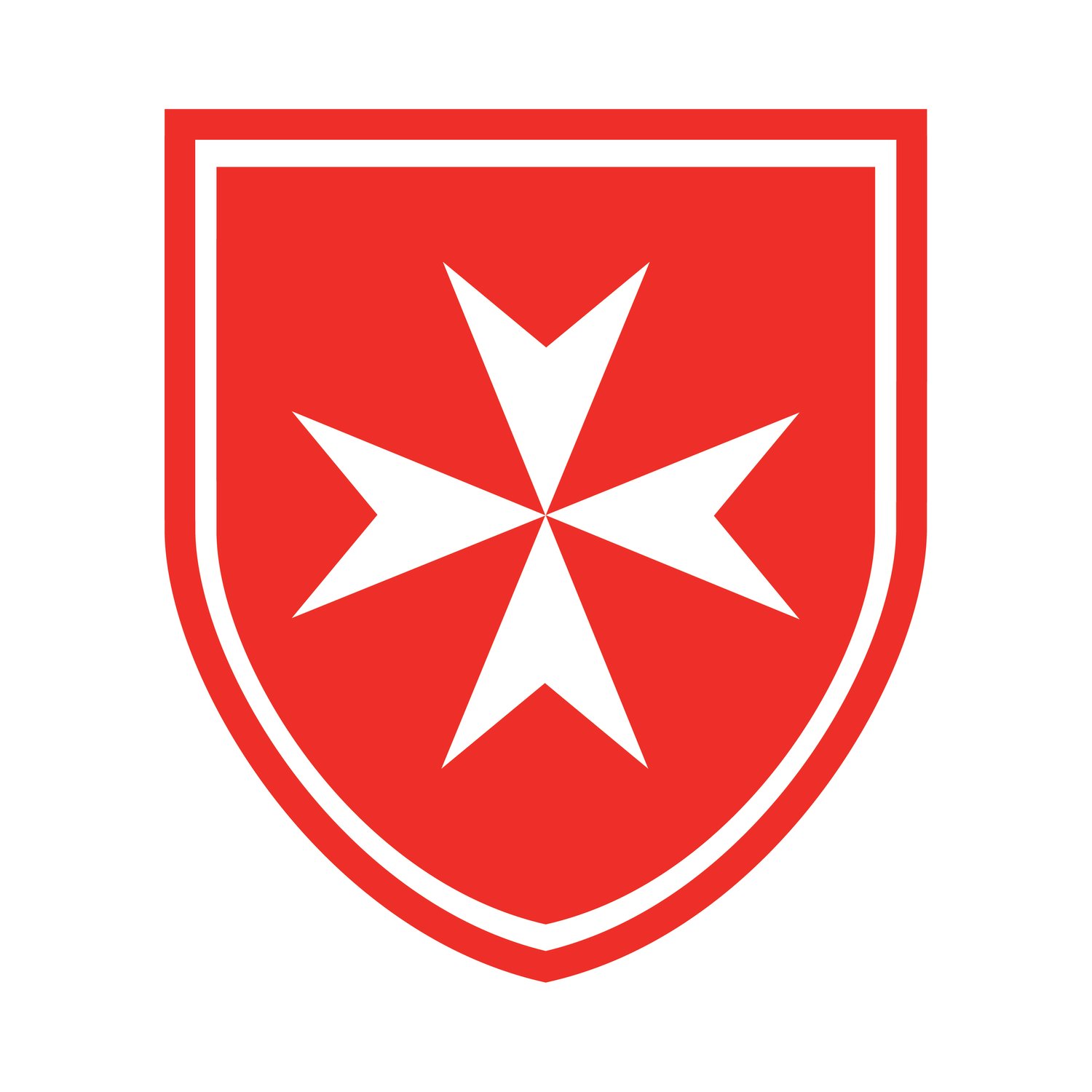THE MOST HOLY AND UNDIVIDED TRINITY
We are grateful to our friend and Chaplain, Father John Osman, priest of Saint Birinus, Dorchester-on-Thames, for this reflection upon the Most Holy Trinity for today's feast. It is very poignant this year, as we leave Paschaltide and enter the long summer of green Sundays, to reflect that we have spent the whole of Lent and Easter nearly completely alone - involuntary anchorites. God grant, with our eyes fixed firmly upon the Trinity, that this is not lost time, but may be turned to our spiritual advantage and to building our strength against the Enemy. The illustration shows a knight, such as you might be, gentle Reader, bearing into spiritual battle the shield of the Most Holy Trinity. May it always be yours.
The Sunday following the great Feast of Pentecost and the Giving of the Holy Spirit, the Church celebrates the Feast of the Most Holy Trinity. We contemplate the Mystery of God as He is in Himself, Father, Son and Holy Spirit and as He has been experienced by the Church throughout History. It is difficult, indeed impossible, for us to contemplate the Mystery of God Who is infinite in His perfections. How could we who are finite and limited comprehend God Who has no limitations? We can know something about the Creator if we look intelligently at the created order – the work of His hands, but we cannot know Him unless He reveals Himself to us in a language which we can understand. The profound question in every human heart whether articulated or not is “What is God like?” and then perhaps a concomitant question: “How do I know Him?” God answers this question for us by speaking our language, that is by taking our human flesh by becoming man and taking human flesh of the Blessed Virgin Mary. The WORD, that is the Second Person of the Trinity who threw the stars into space and is the agent of creation, that Person takes flesh and becomes Man born of woman.
That is the Mystery of the Incarnation, the mystery of Emmanuel – God with us. It is Jesus Christ Who reveals to us His Father and tells Philip “To have seen me is to have seen the Father, for the Father and I are ONE." Furthermore, Our Lord told us that He goes to the Father and that the Father will send us the Gift of the Holy Spirit after Our Lord’s Ascension into Heaven. The Holy Spirit who will be with us until the end of time and Who will lead us into all truth. Our Lord tells us that He will not leave us as orphans but that He will come back to us and be with us.
Trinity Sunday, in a certain sense, sums up God’s Revelation which was brought about through the Paschal Mystery – that is Christ’s Passion, Death and Resurrection, His Ascension to the Right Hand of the Father, and the outpouring of the Holy Spirit.
The human mind and human language are inadequate in seeking to explain the relationship that exists between the Father, the Son and the Holy Spirit – yet the Fathers of the Church sought to illustrate the Mystery of the Triune God by living it with deep faith in their own lives.
The Divine Trinity takes up His abode within us on the day of our Baptism, when the priest says: “I baptize you in the Name of the Father and of the Son and of the Holy Spirit.” Every time we sign ourselves with the sign of the Cross we remember Gods’s Name and the Mystery into which we have been immersed through the waters of Baptism. With regard to the Sign of the Cross, it should always be done with care and devotion and with a remembrance of our Baptism. The Theologian Romano Guardini said: “We make the Sign of the Cross before praying, so that we may bout ourselves spiritually in order, focus thoughts, heart and will on GOD; after praying that what God has given us may remain with us.
PRAYER embraces the whole of our being, body and soul, and everything is consecrated in the Name of the TRIUNE GOD.”
Let us make our own prayer that of St Hilary of Poitiers:
“Keep uncontaminated, the Faith that is in me until my last breath. Protect my conscience that I may be faithful to what I professed in the waters of regeneration, when I was baptized in the Name of the Most Holy Trinity” (St Hilary: de Trinitate XII)
The doctrine of the Holy Trinity is at the heart of our Catholic Faith and the in the experience of the Church throughout the ages. It is not a mathematical problem to be solved, but a mystery to be lived.
(Illumination by the Dominican Guillaume Perrault, 'Peraldus', 1190-1271, of a Christian preparing to do battle against the Seven Deadly Sins, from his volume 'Summa de virtutibus et vitas'.)

